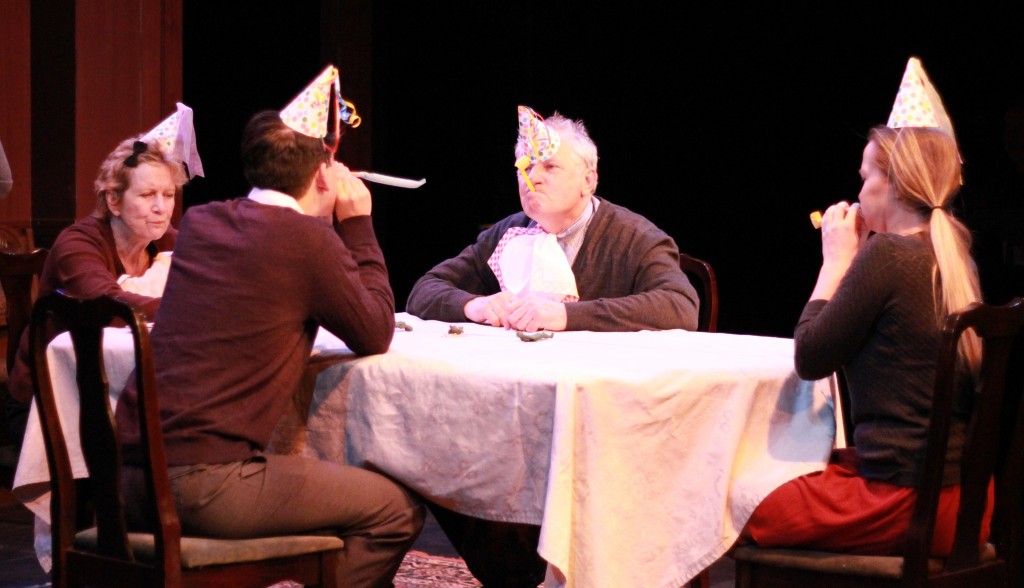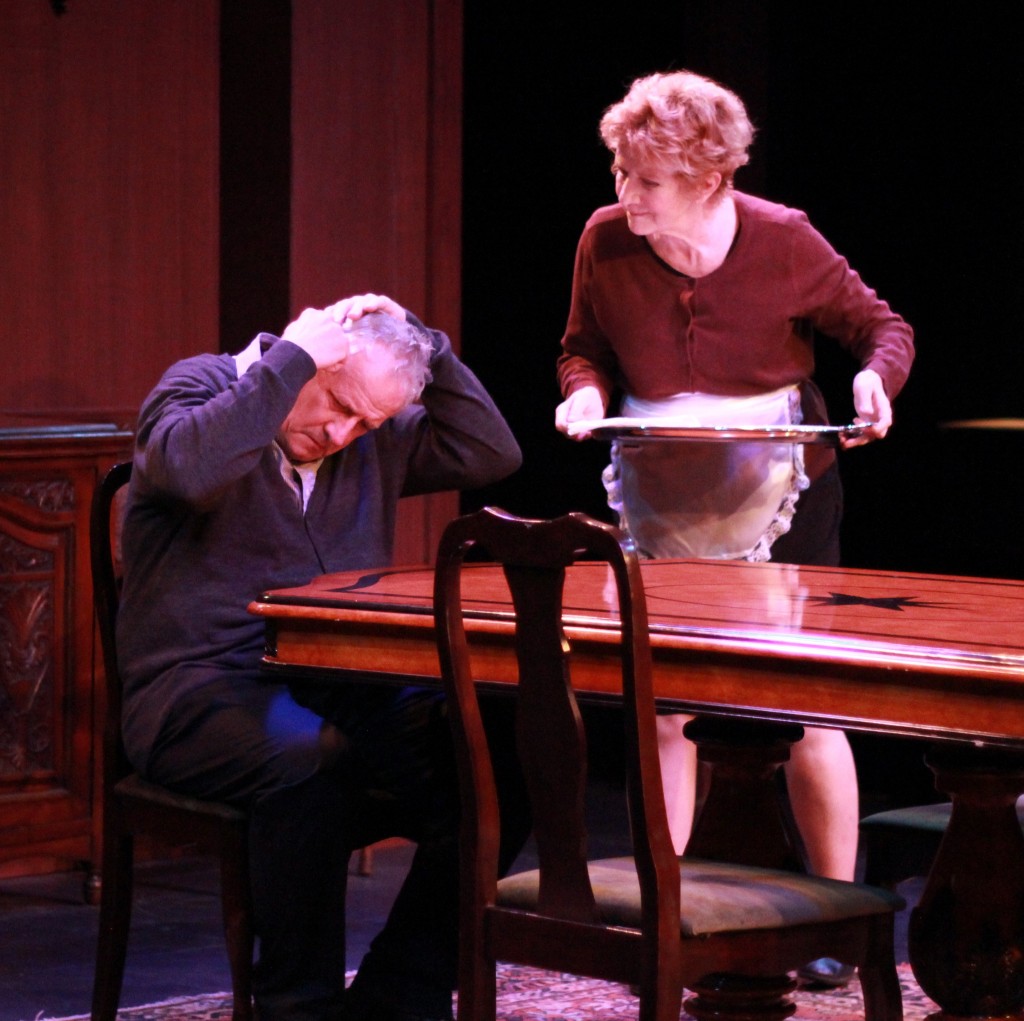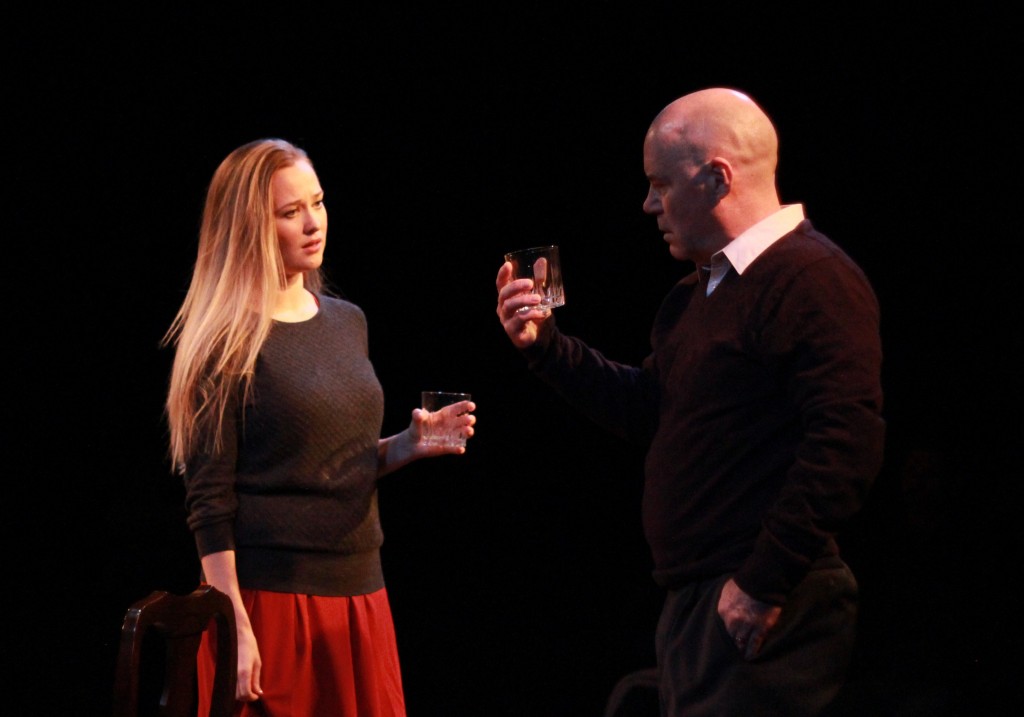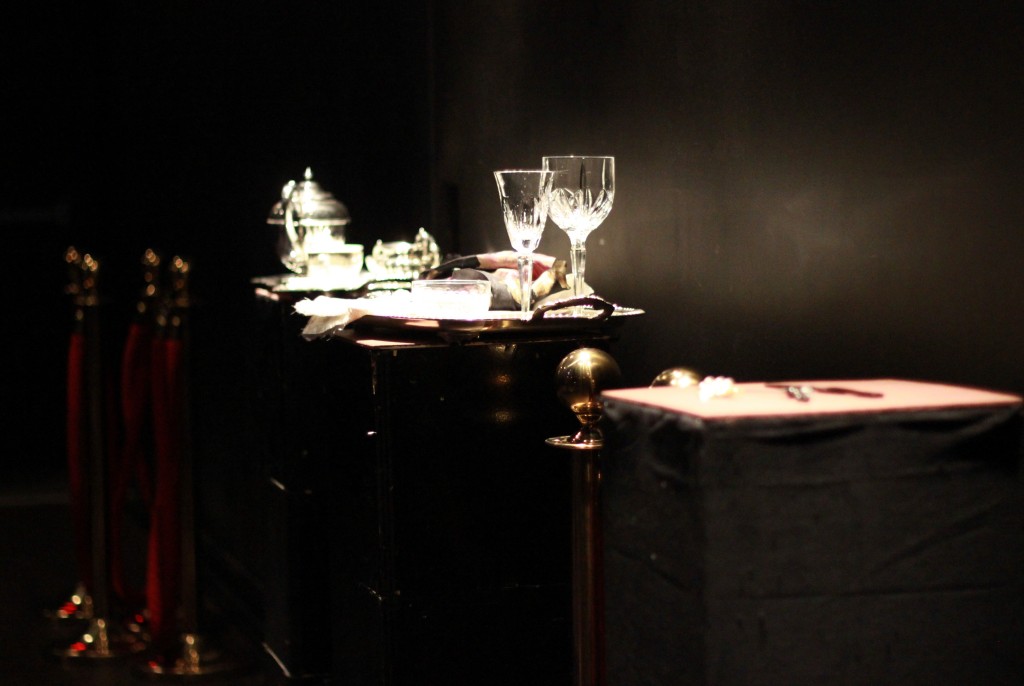
Credit: Marlee Walchuk
At PAL (Performing Arts Lodge) Studio Theatre until November 8, 2015
604-363-5734/brownpapertickets.com
Posted October 25, 2015
“If only the walls could talk.” On a tour of heritage homes at least one person is bound to say it. In A.R. Gurney’s The Dining Room, which premiered in New York in 1982, the playwright focuses not on the walls but on a dining room – the room that, early on, was used in the USA by white, upper-middleclass families for all the meals with Daddy at one end, Mommy at the other and the fidgety kids in between. Often, in these families, there was a maid of few words: “Yes, ma’am” and “Yes, sir” and maybe a ‘coloured’ cook or nanny – much loved by the children. The room, with its highly polished dining room table and chairs with a buffet or credenza nearby, gradually devolved into a special occasion room when the bone china, the silverware and the crystal were brought out, cherished, used, lovingly washed by hand and put away until Easter, Thanksgiving, New Years or Christmas.

Credit: Marlee Walchuk
The play is a eulogy of sorts, not only for the dining room but also for bygone days. While The Dining Room feels very American with accents from a variety of US cities and references to American events, the Canadian dining room has seen a similar decline.
In a mosaic of overlapping vignettes, Chelsea Haberlin deftly directs six performers playing a multitude of roles.
The focal point of Glenn MacDonald’s set is an ornate oval dining room table, six chairs, chandelier and handsome sideboard. Lighting designer John Webber leaves the periphery of this centerpiece more or less in shadow so the various vignettes appear as if in memory.
The play is generally billed as a comedy – and there’s lot of gentle humour in it – but it’s really more of a nostalgic medley – a meal made up of appetizers. A father (John Prowse) instructs his son (Alen Dominguez) on how to get along: “Half of life is meeting other people”. “What’s the other half?” the boy innocently asks, earning his father’s ire. A mother (Anna Hagan) tries to persuade her daughter (Kate Dion-Richard) to attend dancing school rather than see a play with her notorious Aunt Martha. Aggie, the maid (Adele Noronha) tells Michael (Dominguez) she doesn’t want to be a maid any longer and he offers to be, “More careful when I pee” if she’ll stay. A brash young architect tries to persuade the new buyer of the house (Keith Martin Gordey) to turn the dining room into a waiting room and office. This scene – and some others – reveals that all was not always happy around that table: arguments, betrayals, disappointments and frequent insensitivity to the ‘help.’

Credit: Marlee Walchuk
It’s a bittersweet snapshot but what provides the greatest pleasure is the transformative skill of the performers. Anna Hagan, for example, is a giddy little birthday girl in one scene; an unfaithful middle-aged woman; an elderly woman who, at a dinner party, forgets where she is and who these people – her family – are; and a waddling, pregnant Irish maid. All of the performers cross the age barrier easily – sometimes cavorting as little kids, sometimes as troubled or silly adolescents or, in one case, a grown daughter with two kids who wants to come back home to live. The play, like Our Town, is a terrific vehicle for performance.
Presented by Western Gold Theatre, the dining room and its beautiful old furniture could be headed for the museum. The memories linger – mostly lovingly – on. Let’s raise a glass – Waterford crystal, of course – to the dining room.


